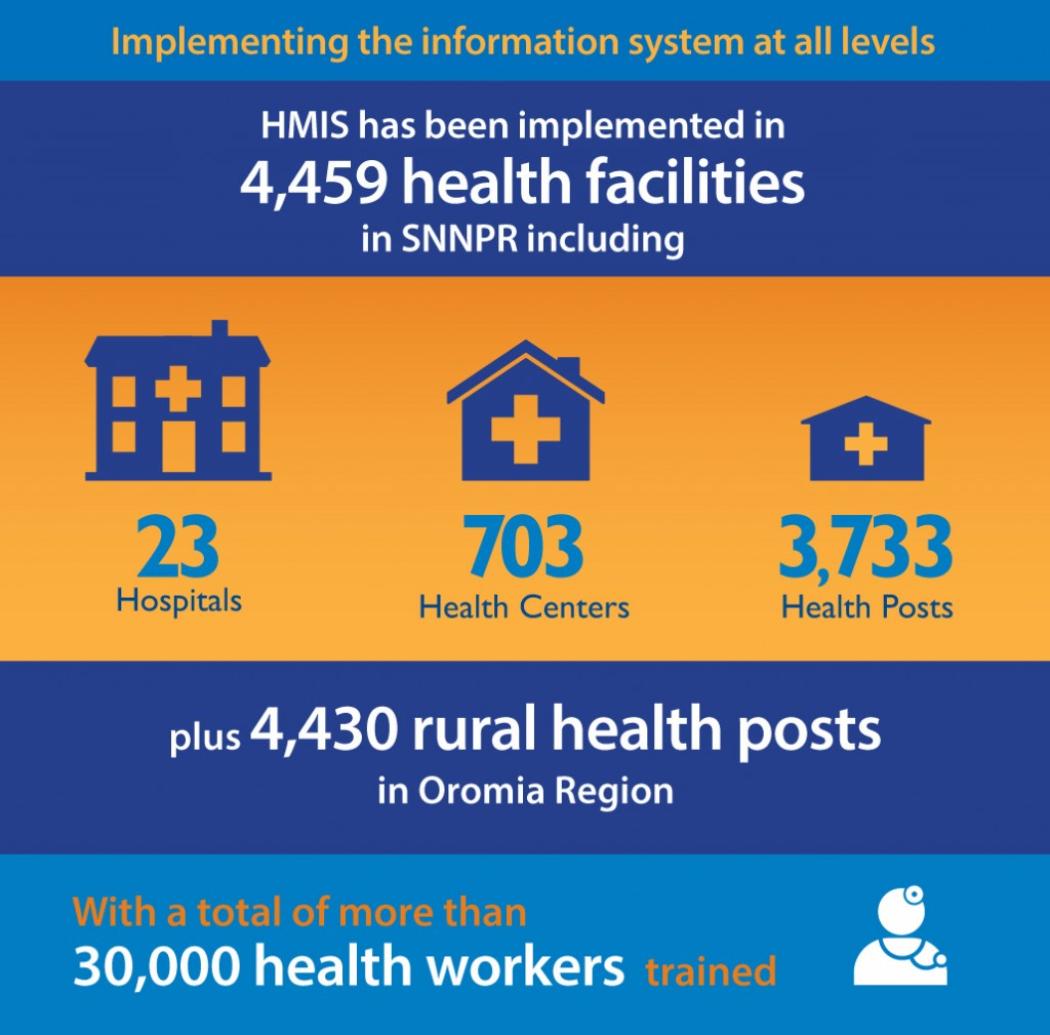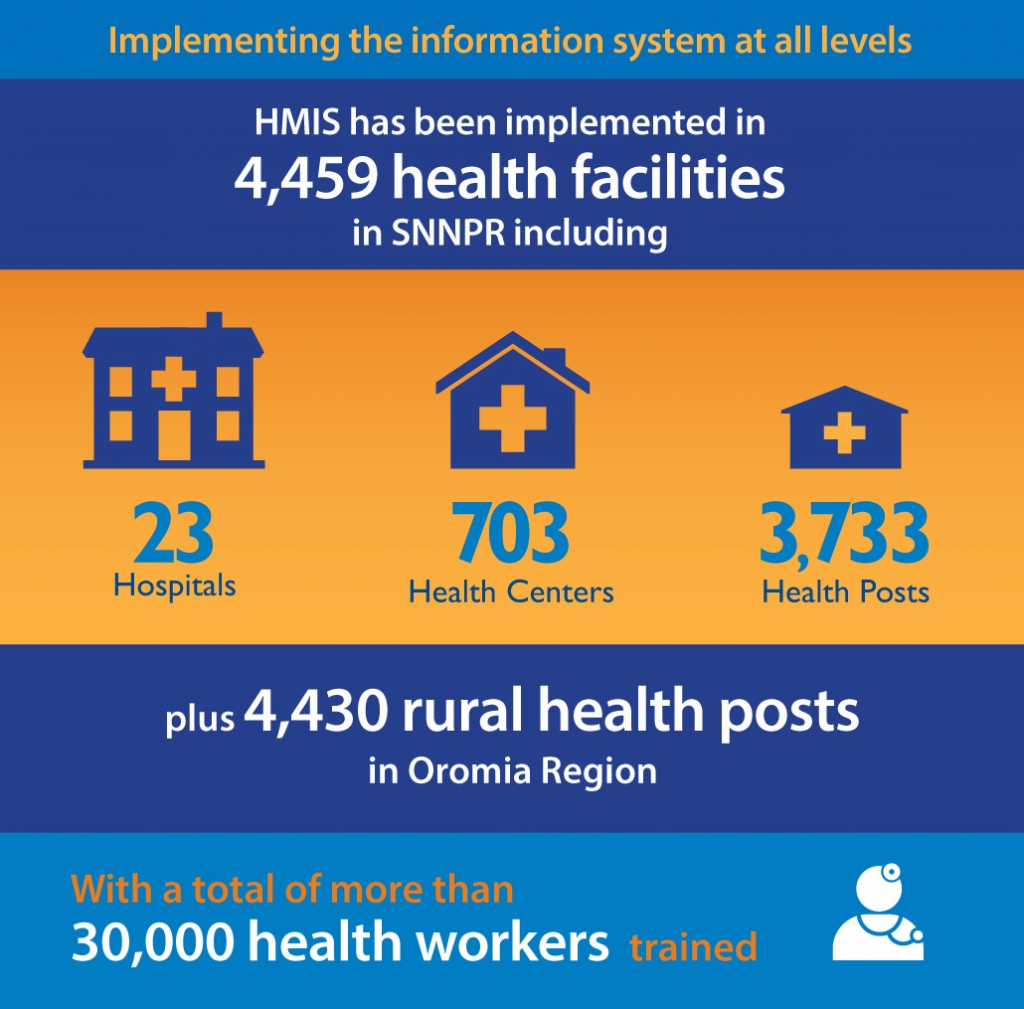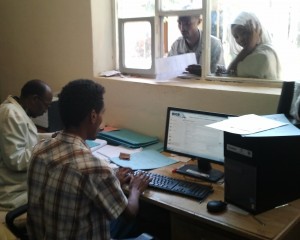Innovations in Information Systems Inform Decision Making at the Community Level in Ethiopia

Written by Amanda Makulec and Tariq Azim, JSI
To understand where, when, and what health services are provided within a health system, quality data must be available. In a country as large as Ethiopia—with 94 million people—developing and implementing systems for capturing quality data can be a daunting task, but when done well can improve how decisions are made, from national budgeting down to health facility outreach planning.
Health management information systems (HMIS) often focus on capturing, transmitting, and visualizing data from the district, regional, and national levels. While these systems are crucial to generating national statistics, they don’t always put the data in the hands of the people who could use it on the ground— frontline health workers.
JSI has been working on an HMIS Scale-up Project with the Ethiopia’s Ministry of Health to develop and implement an electronic health management information system in the Southern Nations, Nationalities, and Peoples' Region . The work has been supported by USAID under the MEASURE Evaluation Project and the Advancing Partners & Communities Project. Developing this system has been a crucial part of the Ministry’s “One Plan, One Budget & One Report” policy. This policy aims to have one harmonized plan for the health sector with one budget where all of the program and donor-supported plans are incorporated using a single reporting system of which the paper-based health management information system is the core providing data on routine monitoring.

To date, the HMIS Scale-up Project has assisted the health bureau in the region to scale up the national system in all 4,459 facilities by implementing a reformed system with a user-centered design. The regional health bureau and all of the district offices and many facilities are now using a computerized application that helps staff enter, aggregate, store, analyze, and evaluate health-related data quickly and accurately.
Over 3,700 of the community health posts in the Southern Nations, Nationalities, and Peoples' Region and 4,430 out of the 6,005 rural agrarian community health posts in the Oromia Region are implementing the government’s Community Health Information System (CHIS), which includes the family folder system and the tickler file system. The family folder system helps health facilities gather and use information in a paper-based system that is kept for every family in the area so that health workers can follow up. The tickler file system includes health cards for clients who need follow-up care. These cards are organized by month according to when their next appointment is needed. Together, these tools improve data access on family health and service coverage for frontline health workers, and support data-driven, community-based decision making.
For example, for time-sensitive, routine services like immunization, frontline health workers can see where there are gaps in coverage at their health post and use an accompanying tickler file for each family to identify who is behind on their vaccination schedule.
The system is improving data quality and information use at the local health posts, and has contributed to better supervision, staff motivation, and targeting of family-oriented services. Its success in such a large area of the country provides a valuable demonstration to other countries considering how to implement electronic health management information systems.
You can learn more about the Ethiopia HMIS Scale-up Project and its work at the community level on JSI’s The Pump and on JSI’s Slideshare.

